We produce complete line equipment’s for making ointments and lotions. We are working to reduce the time it takes to blend and ship out personalized creams and ointments to our customers. Ointments are a type of topical medication, along with other formulations like creams, lotions, gelsand pastes. They have been utilized for both therapeutic and recreational purposes for quite some time. They play a crucial role in the pharmaceuticals business.
Automatic processes are used to produce ointments, which are a topical dosage form of pharmaceuticals. Creams and lotions are our specialtyand we put in the time and effort to get them just perfect for our clients across several sectors.
Prior to packaging and shipment, we verify that the product is up to the standards set by our clients. We also assist businesses in developing and perfecting new versions of their existing products.
The Ointment Manufacturing Plant is an efficient piece of machinery for making ointment, cream, lotion, tooth pasteand other emulsions and homogenizations for the pharmaceutical and cosmetics industries. We produce processing systems that are both straightforward and efficient, with features like dependable high-quality output, fast batch cycles, low operating costs, small footprintsand little downtime.
It begins with dissolving the water-soluble ingredients in mineral-free (demineralized) water. This stage is referred to as the water phaseand it takes place in a special vessel of the same name.
The wax and oil components are similarly thoroughly combined using motor-driven agitators. After the wax and water have melted, they are filtered and transferred to another container using a suction system and a series of pipes. The ointment factory is where the magic happens. At this point, you'll heat the liquid while adding in the rest of the drug's ingredients. Extremely uniform high-velocity homogenizers and emulsifiers.
When the product is ready, a bump pump moves it from the production vessel to the holding tank attached to the filling device.
The manufactured cream or ointment is piped from a storage tank to the filling stations. The filling machine awaits its cargo of tubes. The filling machine works by having a piston in a cylinder expel a measured quantity of ointment via a nozzle into a tube using suction. After being filled, the tubes make their way through a series of stations where they are pressed, crimpedand coded. Before any plastic tubes are used, hot air is forced out of the end of each one at the air blowing station. Finally, they are expelled from the filling machine after going through a sealing and trimming procedure. And we're ready to roll out the ointment tubes to the public. The automated plastic tube filler and sealer may be used to fill and seal plastic tubes with any substance, even those that are semi-viscous or very viscous.
If gels, lotionsand the like are packaged in bottles rather than tubes, piston fillers can reliably fill the desired amount, regardless of the consistency of the product. When working with more viscous creams and lotions, the piston may be more effective than the aforementioned fill principles. Whether or not cosmetic creams and lotions are packed using pump filling machines depends on a number of factors, including the speed of the packaging process, the kind of bottles or containers usedand the nature of the products themselves. It has potential applications in medicine, food, beautyand chemistry. Many products, including ointments, lotions, caulks, adhesives, cheese spreadsand peanut butter, are packaged in tubes. Tube feeding, filling, sealingand output are all managed by a fully automated control system using Delta touch screen technology. This tube filler/sealer is versatile, since it can be set to fit a broad range of bottle sizes.
The octagonal blender is a powerful and adaptable equipment for blending and lubricating. Dry grains are distributed uniformly within an octagonal blender's cylindrical container. Applications range from pharmaceuticals to foods to chemicals to cosmetics. Industrial Mixers and Blenders, Ayurvedic Plant Machineryand Chemical Process Equipment are just few of the applications for Lodha's Octagonal Blender. The Agro Chemicals, Ayurvedic & Herbal, Nutraceuticaland Pharmaceutical Industries all utilize our blender.
The capping operation would follow the filling of the bottles. The conveyor system will take the filled bottles straight to the capping station. Capping machines come in a variety of modelsand we can adapt ours to work with the customer's capping head. Capping jars and other containers is a specialty of our linear capping equipment.
After being filled and sealed, containers are transported down a single line before being visually inspected by means of an Online Visual Inspection system. Against the crisp black and white background, they will be able to see any flaws in the bottle much more readily. The bottles are inspected, then moved on to the main conveyor.
Sticker labels are applied to the bottles in a separate machine once they have passed inspection. Round sticker labelling, double-sided sticker labelling, top-and-bottom labellingand neck-and-body labelling are all possible forms of labelling. In order to label bottles, jars, cans, tinsand other containers, a basic mechanism linear design machine called a bottle labelling machine or bottle self-adhesive sticker labelling machine is used. The versatility of the bottle labeler allows it to apply labels to a wide variety of containers.
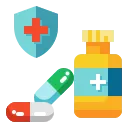
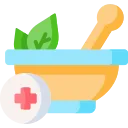
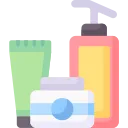
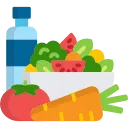
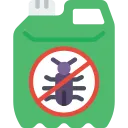
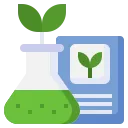
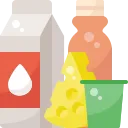
United States | Canada | Mexico | Brazil | Argentina | Chile | Colombia | Peru | Germany | United Kingdom | France | Italy | Spain | Netherlands | Belgium | Switzerland | Sweden | Austria | Denmark | Norway | Poland | Finland | Czech Republic | Hungary | Portugal | Ireland | Greece | Slovakia | Romania | Bulgaria | China | Japan | India | South Korea | Indonesia | Vietnam | Thailand | Malaysia | Philippines | Singapore | Bangladesh | Pakistan | Saudi Arabia | United Arab Emirates | Israel | Turkey | Iran | Qatar | Kuwait | South Africa | Nigeria | Egypt | Algeria | Morocco | Kenya | Ghana | Tunisia | Australia | New Zealand | Russia | Ukraine | Belarus | Kazakhstan | Taiwan | Hong Kong | South Sudan | Uzbekistan | Oman | Jordan | Bahrain | Sri Lanka | Myanmar | Lebanon | Mongolia | Ethiopia | Libya | Angola | Zambia | Zimbabwe | Mozambique | Ivory Coast | Senegal | Uganda | Tanzania | Botswana | Ecuador | Venezuela | Bolivia | Paraguay | Uruguay | Trinidad and Tobago | Panama | Guatemala | Costa Rica | Honduras | El Salvador | Nicaragua | Dominican Republic | Haiti | Cuba